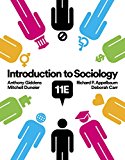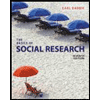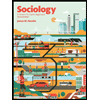HSE 325 FINAL PAPER-FOSTER CARE
docx
keyboard_arrow_up
School
Southern New Hampshire University *
*We aren’t endorsed by this school
Course
325
Subject
Sociology
Date
Apr 3, 2024
Type
docx
Pages
12
Uploaded by LisaGreen1962
HSE 325 Final Paper-Foster Care
Final Paper: Foster Care Lisa Green
Southern New Hampshire University
HSE 325 Ethics and Laws in Child Welfare
Dallas Kennedy
HSE 325-Final Paper-Foster Care
Introduction Milestone 1
In my home state of Florida through the Department of Health and Human Services this type of adoption can only happen after the child’s biological parent(s) rights have been terminated, allowing the foster child eligible for adoption. It is significant to note that in Florida most foster children do not become eligible for adoption. If they do become eligible priority is given to biological family applicants first so the child can remain in their birth family and feel a connection that otherwise would be lost. In a dynamic decision children 12 years old and above need to give their actual consent to be adopted, (Diamond, 2020). The goal of foster care is to provide the child the best possible outcome for safety, love and security outside of their biological home, but the system is designed to do everything in its power to provide any and all services available to bio family and child(ren) to enable reunification. However, if the circumstances are not favorable for example a mother who is an addict choses not to get clean and provide a safe and nurturing abuse free home for her child(ren) then the foster care system moves forward with a long term solution which can include long term foster care and adoption to
give the child(ren) the best possible permanent outcome of stability, safety and love in their lives.. To adopt foster care in the state of Florida multiple steps must be taken in order to proceed in adopting especially to be considered for foster care adoption. As a foster parent of a child wishing to move forward with post foster care adoption. You may contact your foster care 2
HSE 325-Final Paper-Foster Care
caseworker and ask to start the adoption process. Being a foster parent, you have already completed the home study done which is one less hurdle you must meet. Next is an orientation which is one to two hours in length to meet and speak with counselors and other experienced foster parents who have adopted. This orientation will give you valuable information and an overview of the process from beginning to end within the State of Florida adoption process specific to foster care, (
"what does adoption mean to a child?").
Adoptions will be addressed as well as there can be additional steps or procedures that must be met. Additionally, a preparation course which is community based and will help you prepare for the process and to explore and learn about adoption in the State of Florida. Home study has previously been done but additional may be required, there is also abuse and neglect clearances, including background checks for all adults in the home, the required in-depth home study is done to ensure that the foster family (potential adoptive family) provides and will continue to ensure safe, abuse free, loving and secure home. Potential parents are required to supply references both as to your character, financial/employment status and may require others upon request and family interviews, social and medical documentation, educational interviews to
determine how the child is doing in school under your care, involvement as well as stability and safety plans that are in place and observation of the potential parents and child in the home and or educational environment if requested, (Adoptions, "what does adoption mean to a child?"), (Explore adoption).
3
Your preview ends here
Eager to read complete document? Join bartleby learn and gain access to the full version
- Access to all documents
- Unlimited textbook solutions
- 24/7 expert homework help
HSE 325-Final Paper-Foster Care
Typical adoption requires several additional steps including Approval, Seeking the right match for the child and assigning the family under placement supervision once the child has been
matched and placed in your home. This process allows the child and family to spend time together whether it be overnights or extended visits to get to know each other, this obviously has been already in place as a foster family looking to make the foster child their own legal child through adoption. Once all the criteria have been met and all the ethical and procedural steps have been addressed the finalization of adoption can be legalized. Typically, it can take upwards of six to nine months for this process to be complete and adoption finalized, (Explore adoption).
On the federal level the Department of Health and Human Services provides oversight and looks to improve the safety, permanency, and overall well-being of children through direction, support for required services, and effective collaboration with states, and communities. The main
responsibility is administering federal programs that support state child welfare services. The federal agency also provides matching funds to states, communities to help them operate the various aspects of their child welfare system, including the prevention of child abuse and neglect,
the support of lasting placements through adoption, and the information systems necessary to enhance and support such programs,
(Downs et al., 2004), (Foster Care). 4
HSE 325-Final Paper-Foster Care
Service Delivery Models- Milestone 2
In the field of Human Services professionals use and rely on three distinct delivery service models to evaluate and support those in need, including families with children. The three delivery models are the Human Services model, Public Health model and medical model.
In the case study of Concurrent planning in Foster Care. I believe both Human Services and Medical Model will be most beneficial to this family case study. Human Service Model-
The human service model provides support and services that are practical in purpose and nature by assisting to prevent homelessness, food insecurity and increasing the overall wellbeing of families including children. The ultimate goal of this model is to help those in need improve their
lives by helping those in need with services to help resolve, prevent, or deal with an issue by providing them needed services and tools and resources needed to help families maintain a healthy family unit in a current scenario as well as moving forward.
The Human Service Model works to prevent and act in an anticipatory way to assist families with services and resources to facilitate wellbeing and promote health and wellbeing and services
such as housing, food, to assist moving forward to prevent crisis or further repeated issues such as food insecurities, lack of healthcare, housing. The human Service model also encompasses child welfare such as Department of Children and families which oversees child abuse prevention and other child prevention services such as foster care. The ultimate goal is to assist 5
HSE 325-Final Paper-Foster Care
families to improve the quality of each family’s lives and also to protect children in those families and communities, (Downs et al., 2004), (The field of human services.
The Medical model
The medical model treats and evaluates issues that pertain to a medical need such as physical or mental illness. Substance abuse and mental illness are prevalent in this case study and this model is frequently used in interventions when dealing with substance abuse such as Ms. Denton is dealing with and this model can also be beneficial in regard to the children who suffer from mental illness, neglect, physical abuse, and malnutrition,
(Downs et al., 2004), (
The field of human services
).
Although similar, each model has a specific goal and works to best service the particular family and situation at hand. They can overlap which is why all models can individually offer practical solutions to help families improve their overall quality of and needs in their daily lives. Evaluate and Most Effective Model
The delivery model most effective in meeting the needs of the Concurrent Planning in Foster Care is the Human Services model. This model provides housing services if needed, substance abuse services for Ms. Denton so that she can deal with her issue of alcoholism and any mental health issues and long-term issues that have continued to influence her continued addiction and also lead to the issues at hand of not being able to responsibly care for her children. The human services model can be used to help the Denton family prepare for reunification by helping both the mother and her young children by providing services like counseling, protective services oversight, and parenting classes, healthcare for mom and children, (Downs et al., 2004)
6
Your preview ends here
Eager to read complete document? Join bartleby learn and gain access to the full version
- Access to all documents
- Unlimited textbook solutions
- 24/7 expert homework help
HSE 325-Final Paper-Foster Care
While not most effective in this case study, the other models also play a significant role in this family as the children have been neglected, appear to have been physically harmed so the needs are multi service model candidates. By providing all services available the family has a better chance of being reunified when the mom receives and successfully completes rehabilitation services and provides a stable home, ability for maintain healthy relationships with those who are not using drugs or alcohol, she is also able to attend and take advantage of parenting classes and also maintain her own physical and mental wellbeing and providing a warm, safe and abuse free home for her children. By engaging in and utilizing all models as applicable to this family’s needs helps ensure the safety of the
children, lessons the risk of ongoing neglect and abuse and enables the mom to maintain her own health and wellbeing and therefor being able to continue to focus on her children and their needs and provide all services needed and continue to have access to any continued services she and the children may need to maintain a strong healthy, happy family unit, (Downs et al., 2004).
The ultimate goal of foster care placement is to reunify families however, there is always a
Alternative plan that is concurrently planned out incase reunification isn’t the end result
such as adoption, (Explore adoption).
The reason this is part of the process is to provide a safe alternative plan incase the original plan of reunification fails such as Ms. Denton does not re-enter rehabilitation,
maintain sobriety, provide an abuse free home, nutritious and overall healthy environment
for the children, (Downs et al., 2004).
7
HSE 325-Final Paper-Foster Care
III. Guidelines
State and Federal Laws
The Child Abuse Prevention and Treatment Act( CAPTA) was passed by the United States federal government in 1974 to ensure fair, ethical and legal treatment of children and was enacted to protect the children from all forms of abuse including but not limited to physical, mental, sexual and emotional abuses by providing federal funding and guidance to the individual states and the Department of Health
and Human Services which oversees such programs as Foster Care, Child Protection Services. (CITE CAPTA). The Child Protection Act is the single largest piece of legislature(law) enacted to protect all children from any and all forms of neglect and abuse, (ABOUT CAPTA: A legislative history).
While states are required to follow the laws of the CAPTA induvial states can and many do have their own additional laws to protect children from abuse such as in my home state of Florida have laws(statues)
that prohibit abuse of a child in many forms such as physical, emotional and sexual to name a few and also has laws statewide that address mandatory reporting when child abuse is suspected, (Florida Statutes Title v. Judicial Branch § 39.2021 | findlaw).
Ethical Principals
Employees of either the Department of Human Services or local Department of Children and Families have a professional, moral, and ethical duty to uphold the laws of the state and federal government. They are duty bound to protect the children and families they oversee, and they have a mandatory responsibility to report any issues, concerns, or observations they see or are made aware of in order to protect the children and uphold their processional responsibility and accountability to the law as well as to the families especially the children whom they are charged with protecting. The federal government as well as each state have penalties for those who do not uphold the child protection laws by neglecting or not providing due diligence in protecting the children and families they serve, such 8
HSE 325-Final Paper-Foster Care
penalties can be monetary such as fines, sanctions, or imprisonment for those who are mandated such as human service professionals, healthcare providers or teachers, (Chapter 39 section 205 - 2023 Florida statutes).
IV. Best Practices
Relation to Foster Care
As a human services worker who is overseeing and responsible for the care and placement of children in foster care it is the best practice to be thorough, have a complete family history and understanding of the members of the biological family as well as the childr4en involved and also to ensure that all the child’s needs are being met both physically mentally and emotionally and that the child(ren) are placed and safe in a abuse free, safe, loving and home that is best for them and their wellbeing. Services should also be in place for the foster family as well as the biological family to be able to provide as many services needed to promote family reunification and all the tools and services needed to benefit the child and their wellbeing. Support both financial as well as resources may be needed and ongoing within the foster care program and or upon reunification. The best practices are to ensure the care and safety of the child(ren) first and foremost and to uphold all laws and to ensure the child’s safety, health, and overall wellbeing, (Best practices that enhance safety - NCWWI).
I believe that in order to ensure the wellbeing and safety of the child to be placed or in foster care, the human service worker must engage with the child, get to know their needs, personality, viewpoints and understand their feelings. The same interaction and professionalism must be given to the biological family so they are well aware of the needs of the parent(s) and what services will be best suited for them to be able to be the best parent they can, address the needs of the family as a whole and each individual as well and to be able to focus on what is best and needed for the child and their physical, emotional and mental wellbeing, safety and security as well as stability and ongoing placement or reunification, (ABOUT CAPTA: A legislative history).
9
Your preview ends here
Eager to read complete document? Join bartleby learn and gain access to the full version
- Access to all documents
- Unlimited textbook solutions
- 24/7 expert homework help
HSE 325-Final Paper-Foster Care
In order to consider placement if a child in a foster home the professional must get to know what the family is about, what they are in need of, how to best help with providing those needs to ensure the best possible outcome for the child(ren) and ensure they are safe, well cared for and not in danger of any form of abuse, The responsibility of the human services agency and professionals is to ensure child safety and wellbeing. In order to ensure that safety whether in family home, foster home, or potential of adoption the whole child and family dynamics and overall needs and wellbeing must be paramount. To provide as much stability, safety, resources, and services to the child and those involved will ensure that all the needs are being addressed and services available to do all that can be done to maintain safety and wellbeing of the child(ren). (Child welfare and family services: Policies and practice).
and do our due diligence to the best of our ability to ensure the safety and stability of the children in our
care, (ABOUT CAPTA: A legislative history).
Consideration of the best outcome for the child(ren) and their overall wellbeing and safety must be paramount. The child’s best interests, and the ability for the child to feel safe, loved and nurtured promotes the best possible outcome in the foster care system and gives the child the ability to be cared for, safe and that they are important. The foster care system is legally and ethically responsible for the child’s overall wellbeing and placement should be made with every consideration for the child to be able
to thrive, grow and overcome challenges that they have had to be exposed to, (ABOUT CAPTA: A legislative history).
Adhering to legal and ethical guidelines, how are these practices ethical
10
HSE 325-Final Paper-Foster Care
Best practices and guidelines ensure that procedures are being followed and that both ethical and legal guidelines to protect children are being followed. These guidelines are set forth to provide services to the children and families and to ensure the children are being cared for and free from abuse and have available to them all services available to help them with emotional, physical, emotional, and overall wellbeing, (Child welfare and family services: Policies and practice).
Confidentiality is a very important matter, and we human service professionals should always maintain the strictest of privacy and confidentiality to protect the children as well as those who care for them i.e.: foster parent, guardian etc. We must always be mindful of the child and their rights to privacy
as well as the right to know. Even though they are children they are protected under the law in regard to
their safety and protection of information, (Child welfare and family services: Policies and practice).
Ethical issues that can arise can vary, we as professionals must keep our own opinions, biases, and such out of our professional position. We have a legal and ethical responsibility to our clients to serve them in a professional manner regardless of our own opinions, our client’s gender, demographics, or ethnicity as some examples, (Child welfare and family services: Policies and practice).
To provide our clients with the best possible services that will meet their needs we as professionals need to follow our agency policies, uphold all state and federal laws, maintain professionalism, keep our personal biases and points of view out of our professional responsibility and duties. We can’t allow our personal lives and opinions to have any influence on our clients or job performance. We have an ethical and legal responsibility and duty to provide professional services with empathy and compassion with no judgement or bias. In order to do our best, remain ethically professional we must always keep our clients and the law in mind and do our due diligence to the best of our ability to ensure the safety and stability of the children in our care, (Child welfare and family services: Policies and practice).
11
HSE 325-Final Paper-Foster Care
REFERENCES
Adoptions, A. (n.d.). “What does adoption mean to a child?” American Adoptions - Everything to Know About Foster Care [And Other Types of Adoption in Florida]. https://www.americanadoptions.com/florida-adoption/florida-foster-care-
adoption#:~:text=2.,of%20the%20foster%20care%20system. Diamond, J. (2020, April 27). Foster Care in Florida: What you need to know. Heart of Adoptions. https://heartofadoptions.com/foster-care-in-florida-what-you-need-to-know/
#:~:text=Foster%20to%20Adopt%20in%20Florida&text=This%20type%20of%20adoption
%20can,not%20become%20eligible%20for%20adoption
Downs, S. W., McFadden, E. J., Moore, E., Michaud, S. M., & Costin, L. B. (2004). Child welfare and family services: Policies and practice (7th ed.). Pearson Allyn & Bacon. Explore adoption. Florida Department of Children and Families, Explore Adoption. (n.d.).http://www.adoptflorida.org/benefits.shtml Foster Care. The Administration for Children and Families. (n.d.-b). https://www.acf.hhs.gov/cb/focus-areas/foster-care
Florida Statutes Title v. Judicial Branch § 39.2021 | findlaw. (n.d.). https://codes.findlaw.com/fl/title-v-
judicial-branch/fl-st-sect-39-2021/ 12
Your preview ends here
Eager to read complete document? Join bartleby learn and gain access to the full version
- Access to all documents
- Unlimited textbook solutions
- 24/7 expert homework help
Related Documents
Recommended textbooks for you

Social Psychology (10th Edition)
Sociology
ISBN:9780134641287
Author:Elliot Aronson, Timothy D. Wilson, Robin M. Akert, Samuel R. Sommers
Publisher:Pearson College Div

Introduction to Sociology (Eleventh Edition)
Sociology
ISBN:9780393639407
Author:Deborah Carr, Anthony Giddens, Mitchell Duneier, Richard P. Appelbaum
Publisher:W. W. Norton & Company

The Basics of Social Research (MindTap Course Lis...
Sociology
ISBN:9781305503076
Author:Earl R. Babbie
Publisher:Cengage Learning

Criminalistics: An Introduction to Forensic Scien...
Sociology
ISBN:9780134477596
Author:Saferstein, Richard
Publisher:PEARSON

Sociology: A Down-to-Earth Approach (13th Edition)
Sociology
ISBN:9780134205571
Author:James M. Henslin
Publisher:PEARSON

Society: The Basics (14th Edition)
Sociology
ISBN:9780134206325
Author:John J. Macionis
Publisher:PEARSON
Recommended textbooks for you
 Social Psychology (10th Edition)SociologyISBN:9780134641287Author:Elliot Aronson, Timothy D. Wilson, Robin M. Akert, Samuel R. SommersPublisher:Pearson College Div
Social Psychology (10th Edition)SociologyISBN:9780134641287Author:Elliot Aronson, Timothy D. Wilson, Robin M. Akert, Samuel R. SommersPublisher:Pearson College Div Introduction to Sociology (Eleventh Edition)SociologyISBN:9780393639407Author:Deborah Carr, Anthony Giddens, Mitchell Duneier, Richard P. AppelbaumPublisher:W. W. Norton & Company
Introduction to Sociology (Eleventh Edition)SociologyISBN:9780393639407Author:Deborah Carr, Anthony Giddens, Mitchell Duneier, Richard P. AppelbaumPublisher:W. W. Norton & Company The Basics of Social Research (MindTap Course Lis...SociologyISBN:9781305503076Author:Earl R. BabbiePublisher:Cengage Learning
The Basics of Social Research (MindTap Course Lis...SociologyISBN:9781305503076Author:Earl R. BabbiePublisher:Cengage Learning Criminalistics: An Introduction to Forensic Scien...SociologyISBN:9780134477596Author:Saferstein, RichardPublisher:PEARSON
Criminalistics: An Introduction to Forensic Scien...SociologyISBN:9780134477596Author:Saferstein, RichardPublisher:PEARSON Sociology: A Down-to-Earth Approach (13th Edition)SociologyISBN:9780134205571Author:James M. HenslinPublisher:PEARSON
Sociology: A Down-to-Earth Approach (13th Edition)SociologyISBN:9780134205571Author:James M. HenslinPublisher:PEARSON Society: The Basics (14th Edition)SociologyISBN:9780134206325Author:John J. MacionisPublisher:PEARSON
Society: The Basics (14th Edition)SociologyISBN:9780134206325Author:John J. MacionisPublisher:PEARSON

Social Psychology (10th Edition)
Sociology
ISBN:9780134641287
Author:Elliot Aronson, Timothy D. Wilson, Robin M. Akert, Samuel R. Sommers
Publisher:Pearson College Div

Introduction to Sociology (Eleventh Edition)
Sociology
ISBN:9780393639407
Author:Deborah Carr, Anthony Giddens, Mitchell Duneier, Richard P. Appelbaum
Publisher:W. W. Norton & Company

The Basics of Social Research (MindTap Course Lis...
Sociology
ISBN:9781305503076
Author:Earl R. Babbie
Publisher:Cengage Learning

Criminalistics: An Introduction to Forensic Scien...
Sociology
ISBN:9780134477596
Author:Saferstein, Richard
Publisher:PEARSON

Sociology: A Down-to-Earth Approach (13th Edition)
Sociology
ISBN:9780134205571
Author:James M. Henslin
Publisher:PEARSON

Society: The Basics (14th Edition)
Sociology
ISBN:9780134206325
Author:John J. Macionis
Publisher:PEARSON